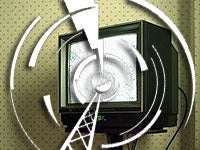 |
With five months remaining before television broadcasters flip the switch from analog signals to digital, lawmakers want to know if the nation is ready for what’s been described as the biggest transformation TV has seen since color.
Following up on last week’s conversion in the test market of Wilmington, N.C., the House Subcommittee on Telecommunications and the Internet cautioned during a hearing today about the state of the nation’s preparedness for the nationwide digital television (DTV) transition Feb. 17, 2009. They also called on government officials to share the lessons they learned from Wilmington that might be applied to the transition.
“With 154 days left … we need to gauge current consumer and industry preparedness for this transition,” Ed Markey, the Massachusetts Democrat who chairs the subcommittee, said during the hearing.
By federal law, broadcasters are required to shut off analog television transmissions next February, freeing up the spectrum for additional uses — such as the development of advanced wireless networks and devices. Without a converter box, however, older television sets that still receive signals over the air, through an antenna, will go dark.
While the subcommittee’s members differed in their assessments of the relative success of the transition test in Wilmington, only a very small portion of the city’s residents were either caught off guard or had problems with their own conversion, according to lawmakers.
However, some legislators pointed out that as a test market, Wilmington had benefited from an inordinate amount of attention from broadcasters, government officials and grassroots groups that volunteered to help ensure that the transition went smoothly.
“Such a focused effort will be difficult to replicate on a national scale,” Markey said.
In an effort to minimize the disruption of the DTV transition, the Federal Communications Commission and the trade association representing television broadcasters have both launched aggressive educational campaigns to reach people who will be affected by the switchover.
That same concern led the subcommittee to hold a series of hearings on the matter, of which today’s was the sixth.
Data from television market researcher Nielsen has indicated that fewer than 10 percent of U.S. households will be affected by the transition — that is, that more than 90 percent either get their TV service from a cable or satellite provider or have a set with a built-in digital tuner, neither of which requires a converter.
That pattern generally held in Wilmington. Within the first five days after the transition, the FCC received about calls from about 1,800 residents — less than 1 percent of the market — who were having problems with their television service.
While some households reported that the Wilmington NBC affiliate was cut off after the switchover, the majority of the calls were from people who were having trouble with their converter boxes, FCC Chairman Kevin Martin told the subcommittee.
In most cases, he said the solution was trivial and the problem could be solved over the phone. Typically, residents didn’t realize they had to push a button to rescan for channels, or they didn’t have the box hooked up correctly. Another common problem reported was that people needed to adjust the antenna on their sets to receive the digital signals.
As a result, broadcasters and the FCC plan to focus their educational efforts more around specific instructions on how to use the converter boxes. Even though Martin insisted that Wilmington went smoothly, if the same problems arise on a national scale in February, the people tasked with troubleshooting could be overwhelmed.
“We’re trying to work through everything we can to bring that 1 percent down,” Martin said. “When you extrapolate around the country, that 1 percent is significant.”
The federal government is partially subsidizing the converter boxes. An agency within the Commerce Department is administering a coupon program seeking to defray the cost of the boxes so consumers will only pay about $40.
Meredith Atwell Baker, the department’s acting assistant secretary for communications and information, encouraged the subcommittee to move a bill forward that would grant the agency more funding and greater discretion in dealing with the expected crush of late requests for coupons on the eve of the transition.
The agency overseeing the coupon program, the National Telecommunication and Information Agency (NTIA), has come under fire from the Government Accountability Office (GAO), which has released a report claiming that it is unprepared to deal with the expected spike in demand.
Mark Goldstein, the GAO’s director of physical infrastructure issues, warned the subcommittee that delays in processing coupon requests could result in households losing television service. Markey asked for a written plan from the NTIA for how it plans to deal with the expected increase in demand for coupons within 30 days.
Another line of inquiry revolved around the implications of the transition in markets along the southern border of the country, where many Spanish-speaking households receive analog transmissions from Mexican broadcasters.
There is a pending bill that would allow U.S. broadcasters within 50 miles of the border to continue broadcasting in analog for a minimum of five years after the February 2009 switchover.


